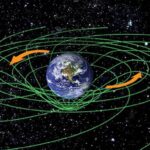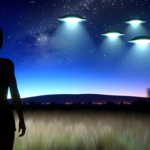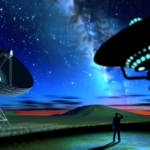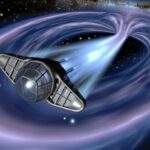Chat-GPT-3 tells what it knows (from conspiracy theories) on Alien Greys Conspiracy theories about alien greys are not based on credible scientific evidence but have become a prominent part of UFO lore and popular culture. These theories have emerged from various sources, including alleged eyewitness accounts, testimonies from self-proclaimed whistleblowers, and individuals claiming to have […]
Features
Taming Gravity features articles and posts supporting the idea that gravity can be tamed.
Gravitomagnetic Field Effect | Artificial Gravity & Dr. Ning Li’s A/C Gravity
Gravitomagnetic field effect, What Is It and How Does It Relate to Artificial Gravity Including Dr. Ning Li’s A/C Gravity First what is the Gravitomagnetic field effect? Introduction: Gravitomagnetic fields, an intriguing aspect of Einstein’s theory of general relativity, are associated with the distortion of spacetime caused by the rotation of massive objects. While these […]
Close Encounters of the Seventh Kind (CE7) – “Human/Alien Hybrids”
Introduction Exploring the Concept of CE7 The classification of UFO encounters has evolved significantly since astronomer and ufologist Dr. J. Allen Hynek first introduced the concept in the 1970s. While Hynek’s scale originally included Close Encounters of the First, Second, and Third Kind, the lexicon has expanded to include more nuanced types of interactions between […]
Close Encounters Nocturnal Lights
Introduction The Enigma of Nocturnal Lights and UFOs The night sky has long been a canvas for the human imagination, dotted with stars and planets, comets and meteors. But among these celestial bodies, there are phenomena that defy easy explanation: nocturnal lights that move with purpose and unidentified flying objects (UFOs) that challenge our understanding […]
ET in the News
Introduction to the Search for Extraterrestrial Life The Growing Interest in ET Life The quest to discover life beyond Earth has captivated human imagination and scientific curiosity for decades. The possibility that we are not alone in the universe is a tantalizing thought that has spurred a global interest in extraterrestrial (ET) life. This interest […]
Metric Field Propulsion Statistics
Introduction to Metric Field Propulsion Definition and Overview Metric field propulsion is a theoretical form of space propulsion that manipulates the structure of space-time to generate thrust. Unlike conventional propulsion systems that rely on the ejection of propellant to produce force, metric field propulsion aims to create a local distortion in the fabric of space-time, […]
How Taming Gravity Works
Introduction to Gravitational Manipulation Overview of Gravitational Theories and UFO Phenomena The quest to understand and potentially control gravity has been a subject of human fascination and scientific inquiry for centuries. From Isaac Newton’s realization of universal gravitation to Albert Einstein’s groundbreaking theory of general relativity, our comprehension of gravity has evolved significantly. Yet, the […]
Close Encounters of the Second Kind
Unveiling the Mysteries: Real-Life Examples of Close Encounters of the Second Kind (CE2) The fascination surrounding Unidentified Flying Objects (UFOs) has found a place in human imagination and scientific curiosity alike. This interest gained substantial scholarly structure thanks to Dr. J. Allen Hynek’s comprehensive classification system for UFO encounters. Among these classifications, “Close Encounters of […]
Close Encounters of the First Kind
A Little Historical Introduction to “Close Encounters of the First Kind” (CE1) A “Close Encounter of the First Kind” refers to a classification of UFO (Unidentified Flying Object) encounters wherein a person witnesses an unidentified object in the sky at a distance of less than 500 feet (approximately 150 meters). This classification does not involve […]
Archive: “Breaking the Law of Gravity” – By Charles Platt – Wired
Breaking the Law of Gravity CHARLES PLATT 03.01.1998 12:00 PM Skeptics had a field day when a scientist claimed in 1996 that gravity could be negated. Now his findings are being investigated in laboratories worldwide. In 1996, Russian émigré scientist Eugene Podkletnov was about to publish a peer-reviewed article in the respected British Journal of […]










